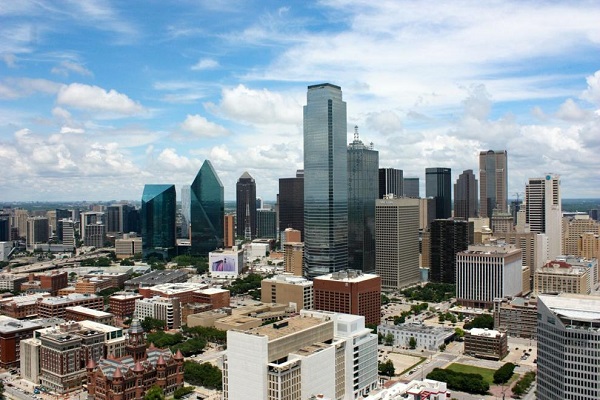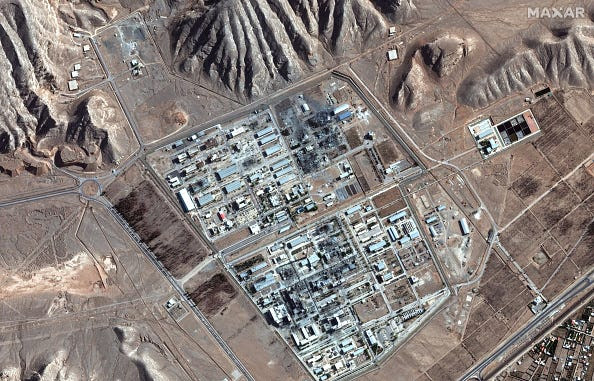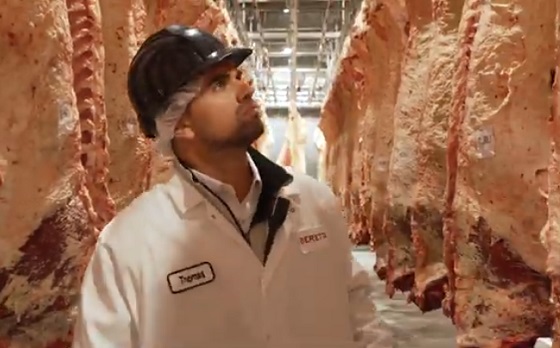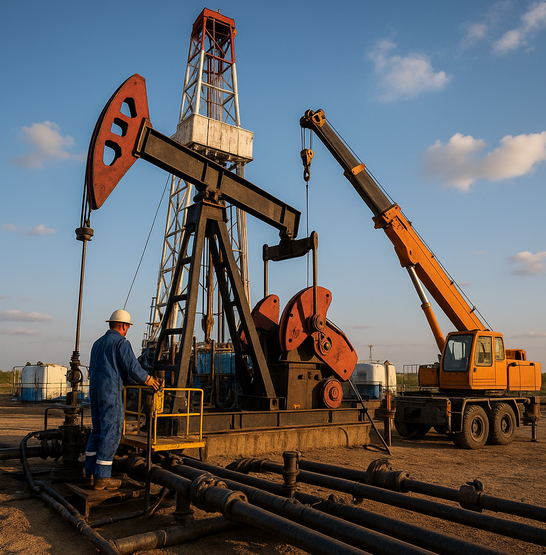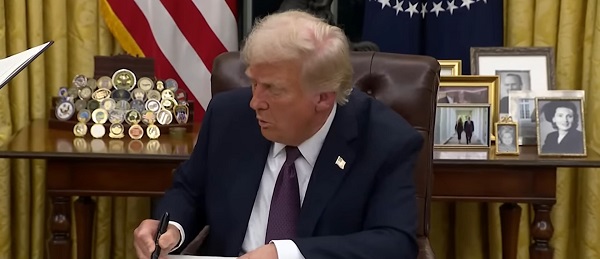Daily Caller
‘Sign Of Great Hope’: Religious Leaders See A ‘Fourth Great Awakening’ As Americans Flock To Christianity
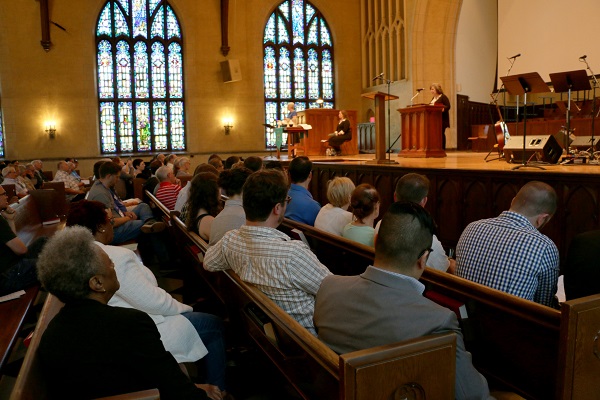

From the Daily Caller News Foundation
By Jaryn Crouson
More Americans are leaning into their Christian faith in what some religious leaders and scholars are calling a “fourth Great Awakening.”
Bible sales in the United States have skyrocketed in 2024, religious colleges are seeing enrollment boosts despite overall declines in higher education attendance and several states are pushing for Bible-based curriculum in public schools. Some Bible scholars believe this may mark a significant cultural shift.
“While it has been apparent to a few of us for some time, millions are now realizing that ‘woke’ ideologies are, in fact, destructive attempts to re-found the nation according to a new civic religion which both parodies and persecutes Christianity,” Chad Pecknold, theologian and professor at The Catholic University of America, told the Daily Caller News Foundation.
Despite overall book sales increasing by only 1% compared to 2023, Bible sales in the U.S. have reached an impressive 22% increase as of October 2024, according to the Wall Street Journal.
The Cardinal Newman Society in October reported that enrollment at Catholic colleges has risen in 2024 despite an overall enrollment decrease at other institutions, with several schools such as Ave Maria University in Florida and Benedictine College in Kansas seeing record growth, increasing attendance by more than 20% over the last 10 years.
“There is a resurgence of Christianity among young people,” Wade Burleson, retired pastor and president of Istoria Ministries, told the DCNF. “I see what is happening [as] more of an Awakening. An Awakening occurs when the irreligious come to faith in Christ.”
Burleson pointed to several instances of young people coming into faith in droves in recent years, with hundreds of students being baptized on campuses across the nation, including several members of the four-time national champion Oklahoma University women’s softball team.
“There have been three Great Awakenings in America, and a few smaller ones,” Burleson continued. “I believe we are in the beginning of a fourth Great Awakening and it is a response to inflation (financial panic), pandemics (Covid), wars (global), and the sudden death of stability in America. There is no anchor in life better than the Anchor of Hope, and when the ship of life is tossed to and fro, faith awakens.”
Pecknold shared this sentiment, arguing that far-left politics have driven Americans towards Christianity.
“Democrats, and the corporations and institutions they controlled, embraced this pseudo-civic religion in their attempt to take total control over the American republic,” Pecknold said. “The American people saw their totalitarian appetites on display in everything from forced vaccinations to extreme racialism to the redefinition of marriage and the denial of sexual difference, all under the ever-evolving banner of ‘the Progress Flag.’”
“This is when the Democrats were defeated so thoroughly on November 5th, it was not only seen as a political victory, but also as a religious victory: it was a repudiation of the ersatz civic religion that Democrats had used to re-found the country.”
Catholic voters played a pivotal role in the 2024 presidential election, making up approximately 25% of the vote and overwhelmingly siding with President-elect Donald Trump, with other Christian voters following suit.
This was a surprising revelation considering tens of millions of Christians were expected to refrain from voting, citing a dislike of both candidates and general uninterest in politics, according to Relevant Magazine. Some religious organizations, however, made efforts to warn voters prior to the election that the Democratic ticket was “patently anti-religious.”
Greg Boyd, theologian and Pastor at Woodland Hills Church in St. Paul, Minnesota is less convinced of this religious revival.
“My concern is that a lot of it seems to be wrapped up with nationalism,” Boyd told the DCNF. “And it concerns me because whenever the Christian faith has gotten too close to political power, it’s been transformed by the political power, and we have Christians trying to control others and conquer others, the same as we’ve had throughout history. And in my opinion, that doesn’t look anything [like] what we find in the Gospel.”
Boyd pointed to examples of states like Texas, Louisiana and Oklahoma approving the implementation of Bible lessons into public school lessons. Texas’ law is meant to help “students to better understand the connection of history, art, community, literature, and religion on pivotal events” in history and Oklahoma’s is similarly meant “as an instructional support into the curriculum.”
“Where did Jesus ever impose himself on others?” the pastor asked.
“I mean, I would love to see a revival in the country,” Boyd said. “The evidence of that would be, I would think, people become more Christ-like, they become more loving. They would be trying to turn the other cheek, trying to reach out across the aisle and build bridges instead of walls. And I don’t see any of that happening with the church as a whole. Seems like it’s kind of gone deeply into political polarization.”
Boyd agreed that many issues in politics have driven people to view current affairs through a religious lens.
Cultural issues such as abortion, gender ideology and diversity, equity and inclusion (DEI) have been hot topics dividing Americans’ opinions, especially religious Americans. The ongoing war in Gaza, as well as the hundreds of protests that spanned the U.S. in response, also impacted Christians’ perspective, with many viewing the apparent prosecution of Jews on college campuses as an infringement on religious freedom as a whole.
Church attendance among Christians remains relatively low in the United States, with only 30% of Protestants and 23% of Catholics attending church every week, according to a March Gallup poll. However, more Americans than ever are consuming religious content, with the Hallow prayer app becoming the first religious app to top Apple’s App Store in 2024 and Fr. Mike Schmitz’s Bible In A Year podcast consistently topping charts in recent years, according to National Review.
Young men in particular are maintaining their devotion to faith, with more Gen Z men identifying as Christian than women for the first time, according to the New York Times.
“We are currently seeing a kind of clarity about the civilizational conflict that ‘woke’ ideologies provoked,” Pecknold told the DCNF. “In brief, the people are fed up with this fake religion, and even if they aren’t Christian themselves, they’re realizing that Christianity provides a far better ‘unwritten constitution’ for the nation than anti-Christian wokeism can supply. There’s a simple realization at work here.”
“Christianity is an ordering principle which elevates and ennobles souls, families, and societies — it’s inherently public, and cannot be ‘privatized,’ relegated to the margins, or separated from questions of education, heritage, public morality, family policy, law, or the aspirations of nations,” Pecknold said. “We still date time by the Incarnation because, deep down, everyone knows that Christianity is objectively true and good for all people — it roots us in reality, it helps us to promote the truly good, and avoid those evils which cause so much suffering — it elevates us by the Light of Christ. Public Christianity is literally what makes civilizational renewal possible. The fact that Americans are remembering this, and having the courage to state it, is a sign of great hope for the nation.”
Business
UN’s ‘Plastics Treaty’ Sports A Junk Science Wrapper
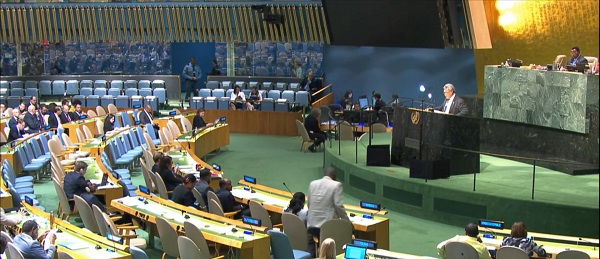

From the Daily Caller News Foundation
By Craig Rucker
According to a study in Science Advances, over 90% of ocean plastic comes from just 10 rivers, eight of which are in Asia. The United States, by contrast, contributes less than 1%. Yet Pew treats all nations as equally responsible, promoting one-size-fits-all policies that fail to address the real source of the issue.
Just as people were beginning to breathe a sigh of relief thanks to the Trump administration’s rollback of onerous climate policies, the United Nations is set to finalize a legally binding Global Plastics Treaty by the end of the year that will impose new regulations, and, ultimately higher costs, on one of the world’s most widely used products.
Plastics – derived from petroleum – are found in everything from water bottles, tea bags, and food packaging to syringes, IV tubes, prosthetics, and underground water pipes. In justifying the goal of its treaty to regulate “the entire life cycle of plastic – from upstream production to downstream waste,” the U.N. has put a bull’s eye on plastic waste. “An estimated 18 to 20 percent of global plastic waste ends up in the ocean,” the UN says.
As delegates from over 170 countries prepare for the final round of negotiations in Geneva next month, debate is intensifying over the future of plastic production, regulation, and innovation. With proposals ranging from sweeping bans on single-use plastics to caps on virgin plastic output, policymakers are increasingly citing the 2020 Pew Charitable Trusts report, Breaking the Plastic Wave, as one of the primary justifications.
But many of the dire warnings made in this report, if scrutinized, ring as hollow as an empty PET soda bottle. Indeed, a closer look reveals Pew’s report is less a roadmap to progress than a glossy piece of junk science propaganda—built on false assumptions and misguided solutions.
Pew’s core claim is dire: without urgent global action, plastic entering the oceans will triple by 2040. But this alarmist forecast glosses over a fundamental fact—plastic pollution is not a global problem in equal measure. According to a study in Science Advances, over 90% of ocean plastic comes from just 10 rivers, eight of which are in Asia. The United States, by contrast, contributes less than 1%. Yet Pew treats all nations as equally responsible, promoting one-size-fits-all policies that fail to address the real source of the issue.
This blind spot has serious consequences. Pew’s solutions—cutting plastic production, phasing out single-use items, and implementing rigid global regulations—miss the mark entirely. Banning straws in the U.S. or taxing packaging in Europe won’t stop waste from being dumped into rivers in countries with little or no waste infrastructure. Policies targeting Western consumption don’t solve the problem—they simply shift it or, worse, stifle useful innovation.
The real tragedy isn’t plastic itself, but the mismanagement of plastic waste—and the regulatory stranglehold that blocks better solutions. In many countries, recycling is a government-run monopoly with little incentive to innovate. Meanwhile, private-sector entrepreneurs working on advanced recycling, biodegradable materials, and AI-powered sorting systems face burdensome red tape and market distortion.
Pew pays lip service to innovation but ultimately favors centralized planning and control. That’s a mistake. Time and again, it’s been technology—not top-down mandates—that has delivered environmental breakthroughs.
What the world needs is not another top-down, bureaucratic report like Pew’s, but an open dialogue among experts, entrepreneurs, and the public where new ideas can flourish. Imagine small-scale pyrolysis units that convert waste into fuel in remote villages, or decentralized recycling centers that empower informal waste collectors. These ideas are already in development—but they’re being sidelined by policymakers fixated on bans and quotas.
Worse still, efforts to demonize plastic often ignore its benefits. Plastic is lightweight, durable, and often more environmentally efficient than alternatives like glass or aluminum. The problem isn’t the material—it’s how it has been managed after its use. That’s a “systems” failure, not a material flaw.
Breaking the Plastic Wave champions a top-down, bureaucratic vision that limits choice, discourages private innovation, and rewards entrenched interests under the guise of environmentalism. Many of the groups calling for bans are also lobbying for subsidies and regulatory frameworks that benefit their own agendas—while pushing out disruptive newcomers.
With the UN expected to finalize the treaty by early 2026, nations will have to face the question of ratification. Even if the Trump White House refuses to sign the treaty – which is likely – ordinary Americans could still feel the sting of this ill-advised scheme. Manufacturers of life-saving plastic medical devices, for example, are part of a network of global suppliers. Companies located in countries that ratify the treaty will have no choice but to pass the higher costs along, and Americans will not be spared.
Ultimately, the marketplace of ideas—not the offices of policy NGOs—will deliver the solutions we need. It’s time to break the wave of junk science—not ride it.
Craig Rucker is president of the Committee For A Constructive Tomorrow (www.CFACT.org).
Business
‘Experts’ Warned Free Markets Would Ruin Argentina — Looks Like They Were Dead Wrong


From the Daily Caller News Foundation
The current state of Argentina’s economy is a far cry from what “experts” predicted when they warned that President Javier Milei’s pro-free market leadership would devastate the country.
The chainsaw-wielding libertarian rose to power on promises to slash government spending, implement free-market policies and lift strict currency controls to rescue a nation crippled by inflation, debt and entrenched poverty. Though the pundit class warned that Milei’s policies would spark an economic collapse, the results so far have been a rebuke to those warnings.
Just days before the November 2023 presidential election, 108 economists from around the world signed an open letter claiming that Milei’s “simple solutions” were “likely to cause more devastation in the real world in the short run, while severely reducing policy space in the long run.”
“His policies are poorly thought through. Far from building a consensus, he would struggle to govern,” The Economist’s editorial board wrote in a September 2023 piece describing “Javier Milei’s dangerous allure.”
Well over a year into Milei’s presidency, Argentina is showing its strongest economic performance in years. The country’s gross domestic product (GDP) jumped 7.7% in April compared to the same month in 2024, far exceeding expectations.
The GDP is expected to rise by 5.2% in 2025, compared to declines of 1.3% in 2024 and 1.9% in 2023, according to the Organization for Economic Cooperation and Development (OECD).
Inflation, a long-standing hallmark of Argentina’s economic dysfunction, dropped to 1.5% between April and May, reaching a five-year low. Annual inflation has plunged from 160.9% in November 2023 — just before Milei took office — to 43.5% in May.
Meanwhile, poverty rates have also declined sharply, falling from 52.9% in the first half of 2024 to 38.1% in the second half of the year.
Argentina’s rental housing supply also increased by 212% between December 2023 and June 2024, after Milei repealed the country’s rent control laws, according to the Cato Institute.
“Against the background of a difficult legacy of macroeconomic imbalances, Argentina has embarked on an ambitious reform process, starting with an unprecedented upfront fiscal adjustment. Reforms have started to pay off. Inflation has receded and the economy is set for a strong recovery,” the OECD noted in its new analysis of the Argentinian economy. “Maintaining the reform momentum will be key to restore confidence, boost investment and productivity growth.”
Milei — a self-described anarcho-capitalist — has been an ardent supporter of President Donald Trump’s efforts to downsize the U.S. government, including the Department of Government Efficiency’s (DOGE) push to cut spending.
“I come from a country that bought all of those stupid ideas that went from being one of the most affluent countries in the world to one to one of the [poorest],” Milei said in a speech at the Conservative Political Action Conference in 2024. “If you don’t fight for your freedom, they will drag you into misery … Don’t surrender.”
-

 Business2 days ago
Business2 days agoWEF-linked Linda Yaccarino to step down as CEO of X
-

 Automotive2 days ago
Automotive2 days agoAmerica’s EV Industry Must Now Compete On A Level Playing Field
-

 Business2 days ago
Business2 days ago‘Experts’ Warned Free Markets Would Ruin Argentina — Looks Like They Were Dead Wrong
-

 Alberta1 day ago
Alberta1 day agoAlberta school boards required to meet new standards for school library materials with regard to sexual content
-

 International2 days ago
International2 days agoSecret Service suspends six agents nearly a year after Trump assassination attempt
-
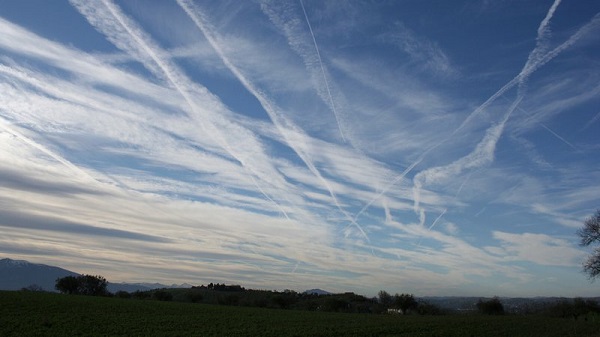
 Environment22 hours ago
Environment22 hours agoEPA releases report on chemtrails, climate manipulation
-

 Business1 day ago
Business1 day agoCarney government should recognize that private sector drives Canada’s economy
-

 Bruce Dowbiggin1 day ago
Bruce Dowbiggin1 day agoThe Covid 19 Disaster: When Do We Get The Apologies?
